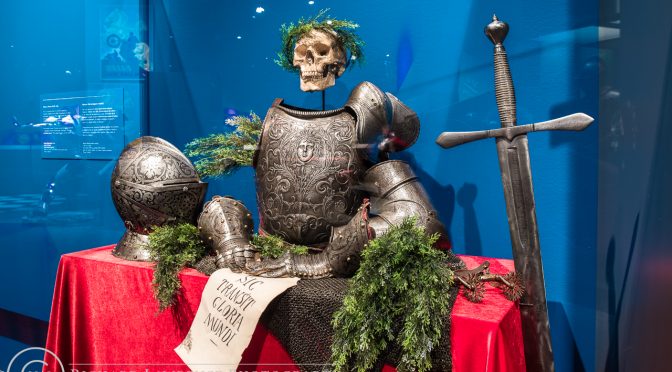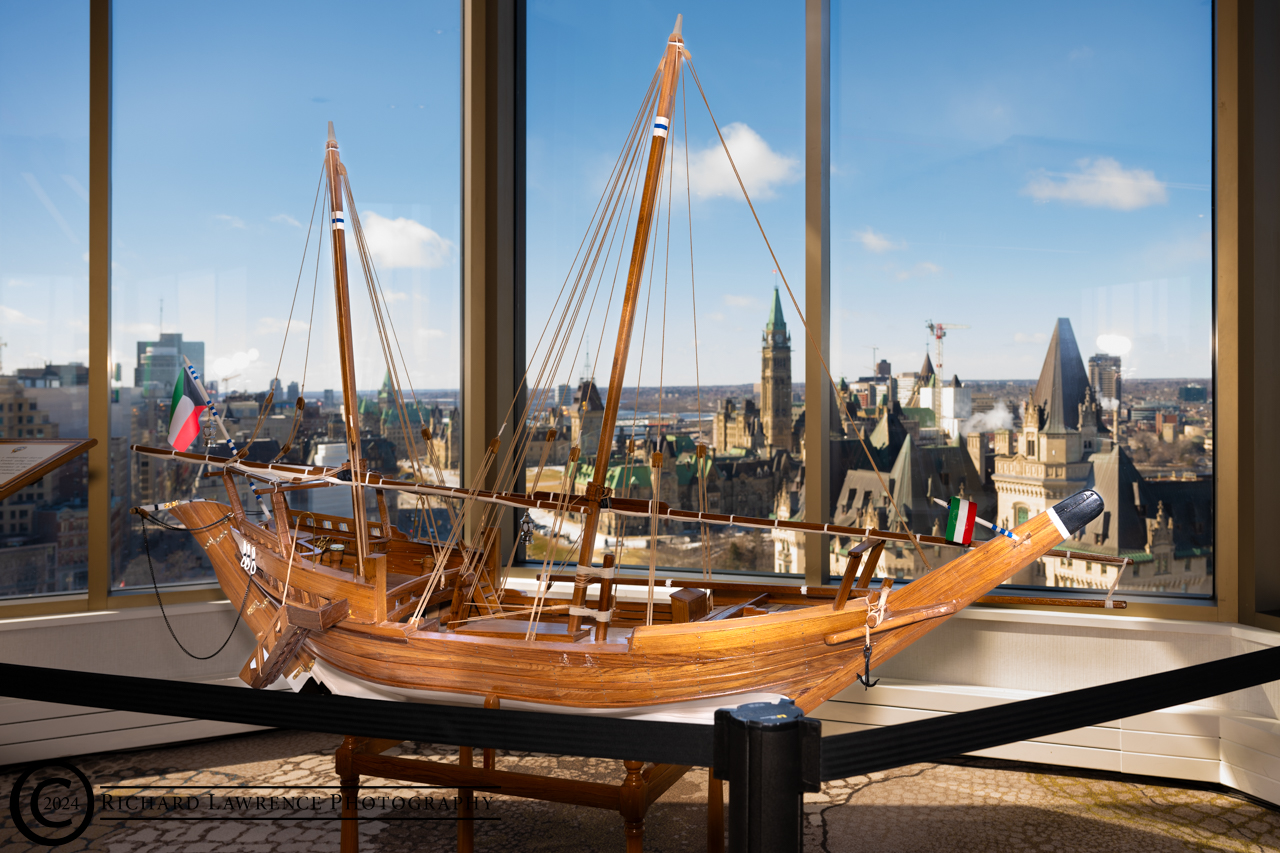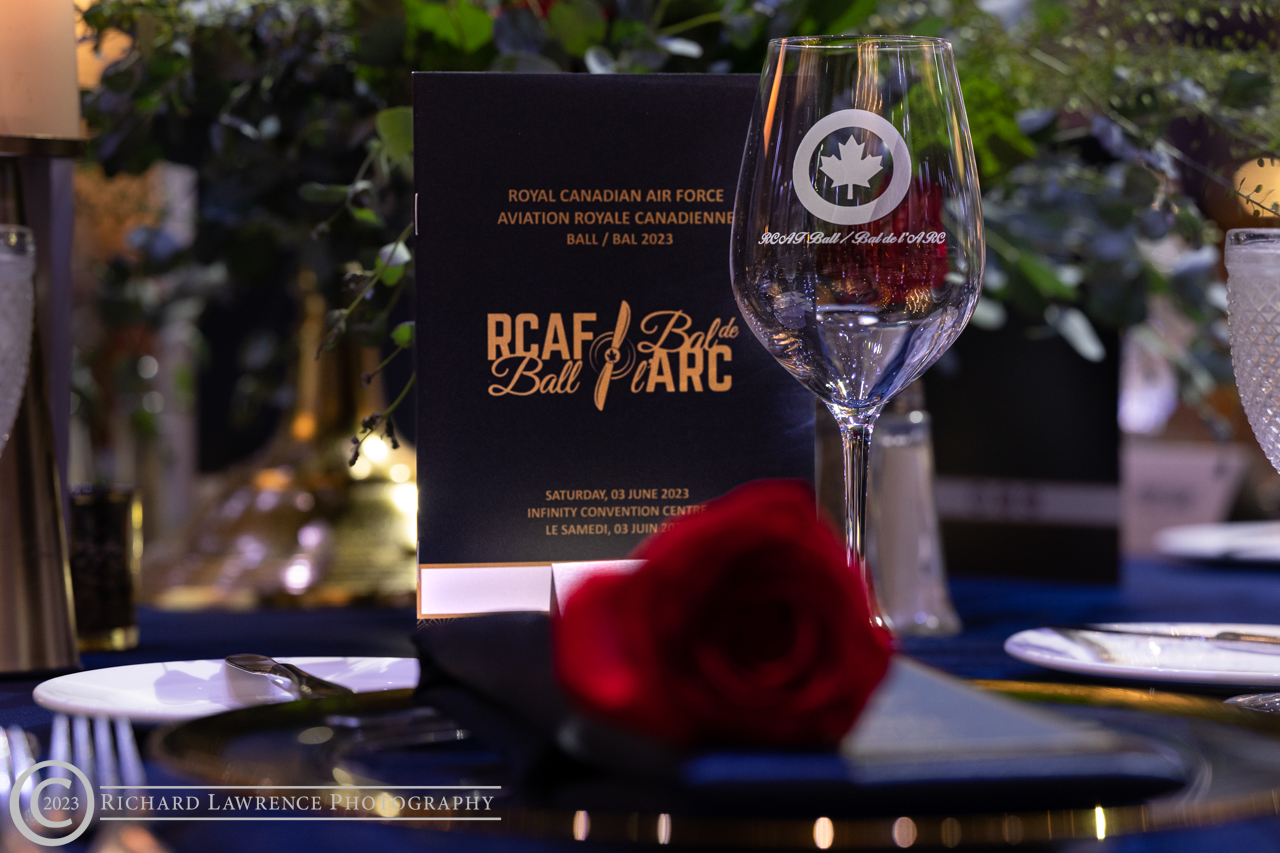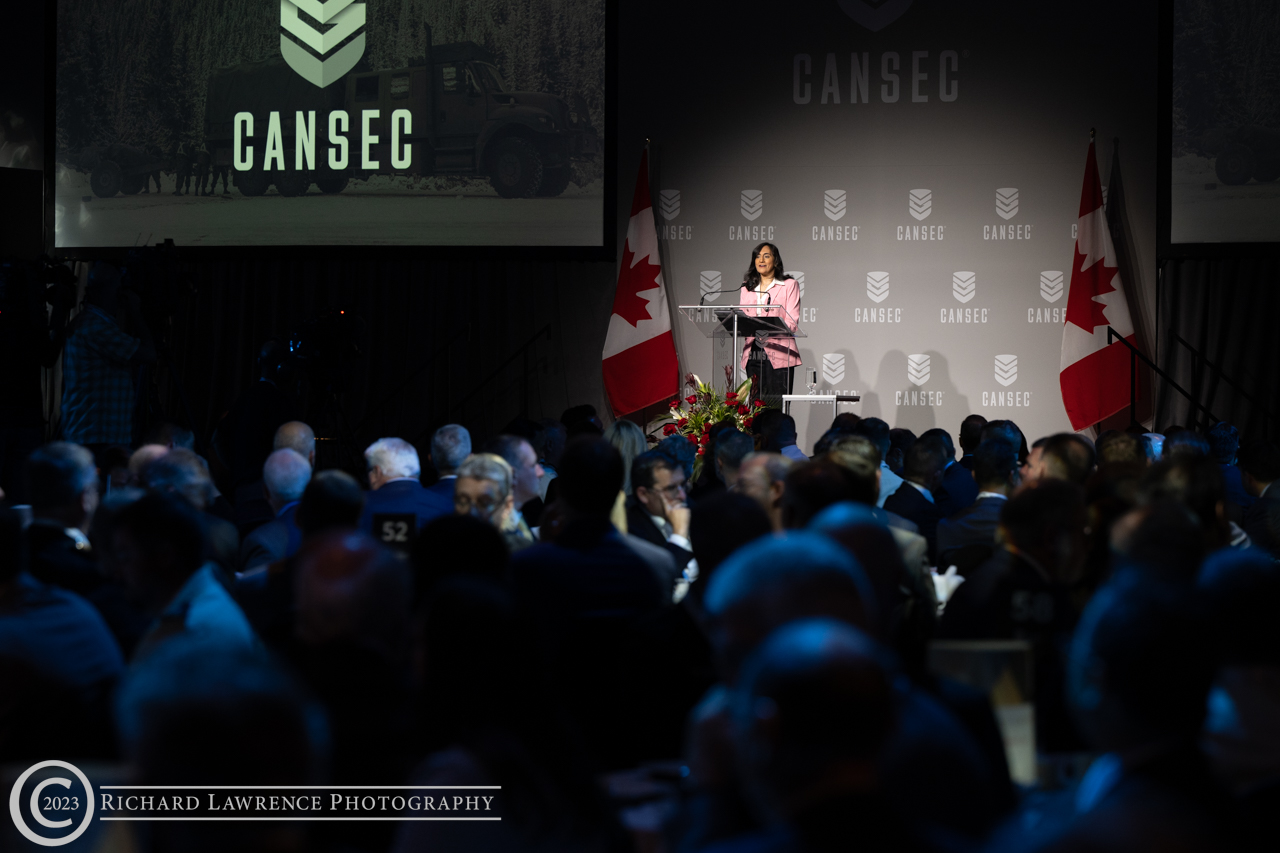In medieval times, armour clad knights did battle atop steeds for the glory of their country, their lords, for their religion, and for themselves. But those days are over. Or are they? This is the question that the new exhibit, Armour, at the Canadian War Museum’s (CWM) McCrae Gallery from 15th June until 3rd September, 2018, looks at.
Caroline Dromaguet, Acting-Director of the CWM, said that the exhibition is “… going beyond the idea of protection alone. It invites us to explore the many facets of body armour from the battlefields of old right up to high-tech cladding of Hollywood’s Iron Man…”.
In conjunction with the Museo Stibbert of Florence, Italy, the CWM has created an exhibition of armour from medieval and Renaissance times through history into modern times and pop culture. The McCrae Gallery has been divided into four zones dealing with Battle, Sports, Status, and Pop Culture examining how armour and weaponry has affected society. The Battle Zone shows a myriad of full armour, swords, and weapons from the medieval era and explains how armour had to change as weapons became more lethal. The Sports Zone starts with the time where knights would fight and joust in tournaments, complete with two complete ensembles of armour of knights on horse. It travels to modern times where today’s sports figures have replaced knights showing the goalie equipment of three time Olympic medalist Shannon Szabados, as well as a selection of football, hockey, and cycling helmets from the past made of flimsy leather to today’s cutting edge materials. The Status Zone shows how body armour evolved from protection to more ceremonial uses as firearms made armour obsolete. Some of the armour is inlaid with other precious metals while past pieces of armour (i.e. the gorget) evolved into other uses such as indications of rank. Lastly, the Pop Culture Zone shows replicas of the Iron Man and the Bullet Farmer (from Mad Max – Fury Road) in today’s re-imagined armour.
The Museo Stibbert was created by Frederick Stibbert, who lived during the second half of the 19th century in Florence. The collection of over 50,000 items was made possible by an inheritance from his grandfather who was Commander-in-Chief of the British East India Company’s private army. His collection contains a rich collection of European, Islamic and Japanese arms as well as paintings, sculptures, and furniture from between the 15th and 19th centuries which he left to the Municipality of Florence on his death in 1906.
At the opening, addresses to the invited guests included Caroline Dromaguet, Fabrizio Nava, Minister Counsellor of the Embassy of Italy, Enrico Colle, Director of Museo Stibbert in Florence Italy, Mélanie Morin-Pelletier, historian at the CWM. Several of the speakers talked to the importance of these cultural exchanges with Frabrizio Nava stating the importance of sharing cultural items between countries as “It is through culture that we generate the depth that enables us to sustain our friendship.”.
It’s an interesting exhibit so take it in.
=================================================















